Hailing from the rainforests of South America, Syngonium is a genus of subtropical climbers that have weaved their way into many homes (and hearts).
S. podophyllum is arguably the most popular species, though – in its mature form – it’s often too big for most terrariums.
That’s where the ‘Pixie’ comes in!
This adorable dwarf variety remains true to the Arrowhead Vine name with its signature arrow-shaped leaves, but it stays small, compact, and fabulous.
Making the Syngonium Pixie perfect for terrariums and equally small spaces in the home.
Want to find out more? Read on!
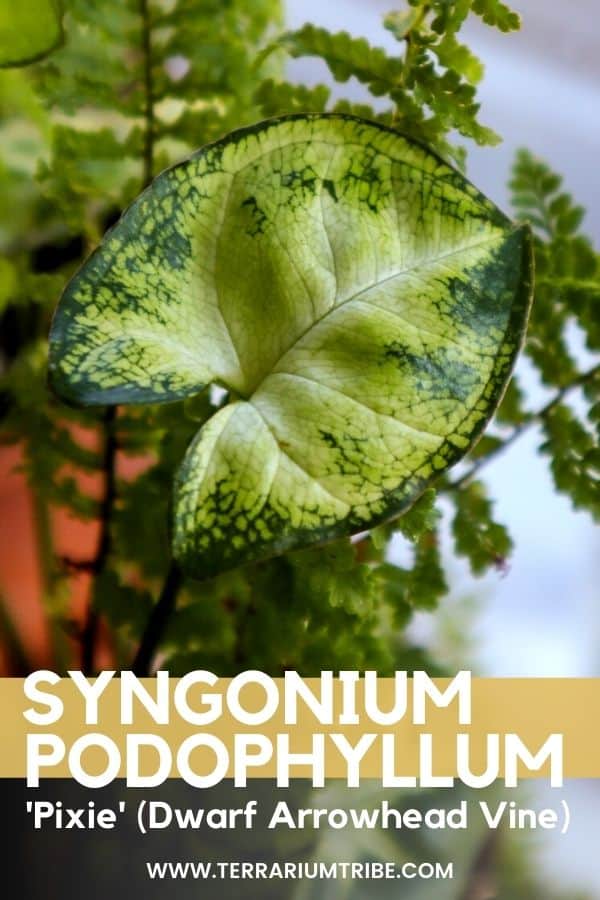
What is the Pixie Syngonium? (& How is it so Cute?)
True to its name, Syngonium ‘Pixie’ is positively tiny and full of magic.
Though, it also goes by the name Goosefoot Plant ‘Pixie’ (which doesn’t quite have the same ring to it).
With a distinct creamy white variegation in the center of the leaves and a deep emerald green around the edges, it’s full to the brim of contrast and color. I love it.

Plus, the Dwarf Arrowhead Vine is super forgiving on the care front – what’s not to love?
You can expect this miniature variety to grow smaller leaves than its popular cousins and to stay more compact. Though, I did find mine to grow upwards to fill the space. More on that later.
Where to Buy Syngonium podophyllum ‘Pixie’
See the links below to purchase from reputable terrarium plant shops and marketplaces (may include affiliate links).
Syngonium ‘Pixie’ Care & Growth
At a Glance
| Plant Type | Vine |
| Lighting | Bright, indirect light |
| Temperature | 60-80°F (15-26°C) |
| Watering | Regular, even moisture |
| Humidity | High humidity (60-90%) |
| Growth | 6-8 inches |
Lighting
Syngonium podophyllum ‘Pixie’ is a versatile plant that will grow readily in most lighting conditions.
It’ll thrive in bright, indirect light but also manage fine in low to medium light settings, too (though it may lose some vibrancy/variation).
Remember, unlike the green leaves, the creamy white parts of the plant can’t photosynthesize. So, if your particular plant has an abundance of variegation, then you can expect it to struggle in shade conditions.
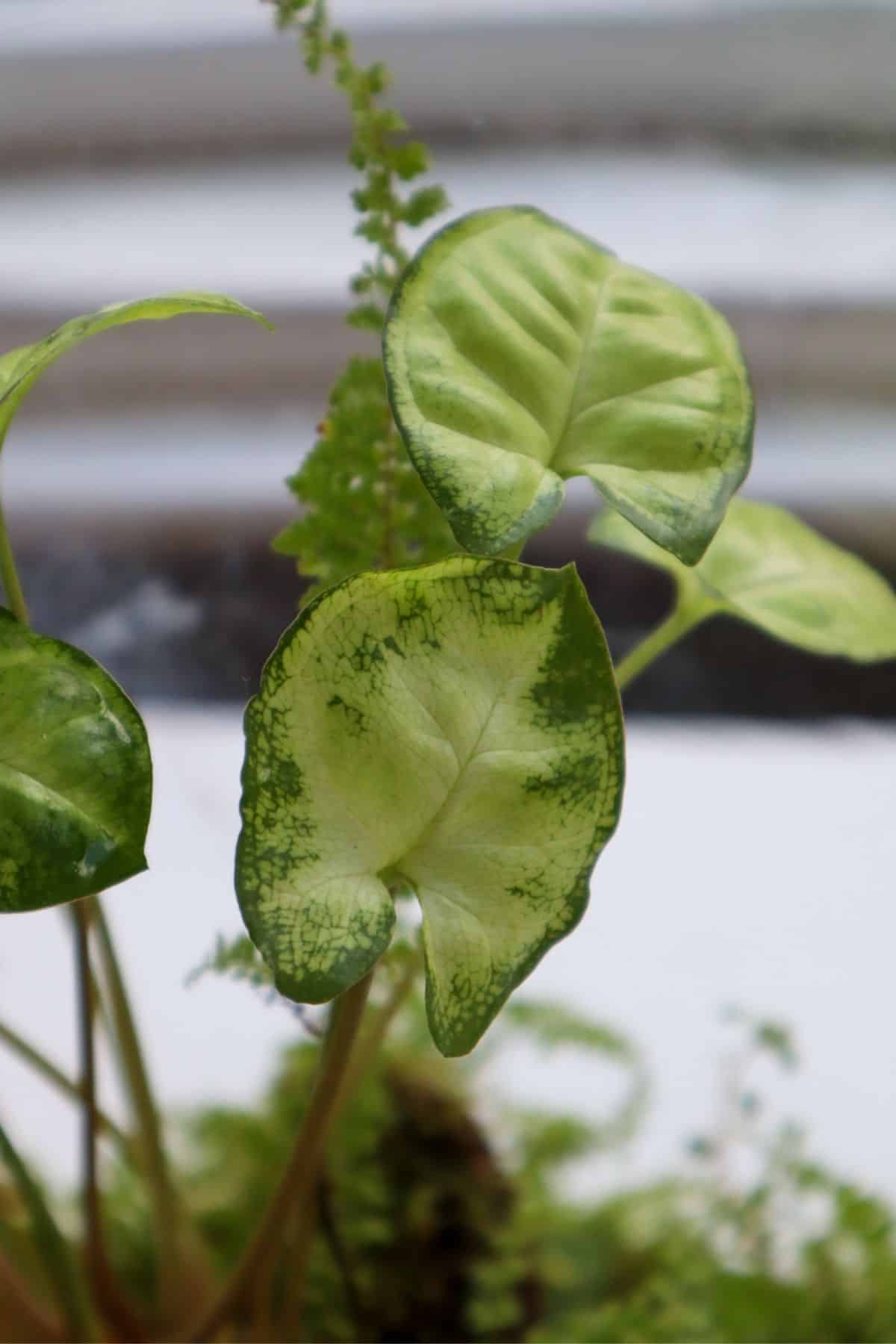
The brighter the (indirect) light you can give it, the stronger the variegated colors!
On the other side of the spectrum, try to keep this plant out of direct sunlight to avoid scorching the leaves.
Artificial lighting can help you keep the balance here.
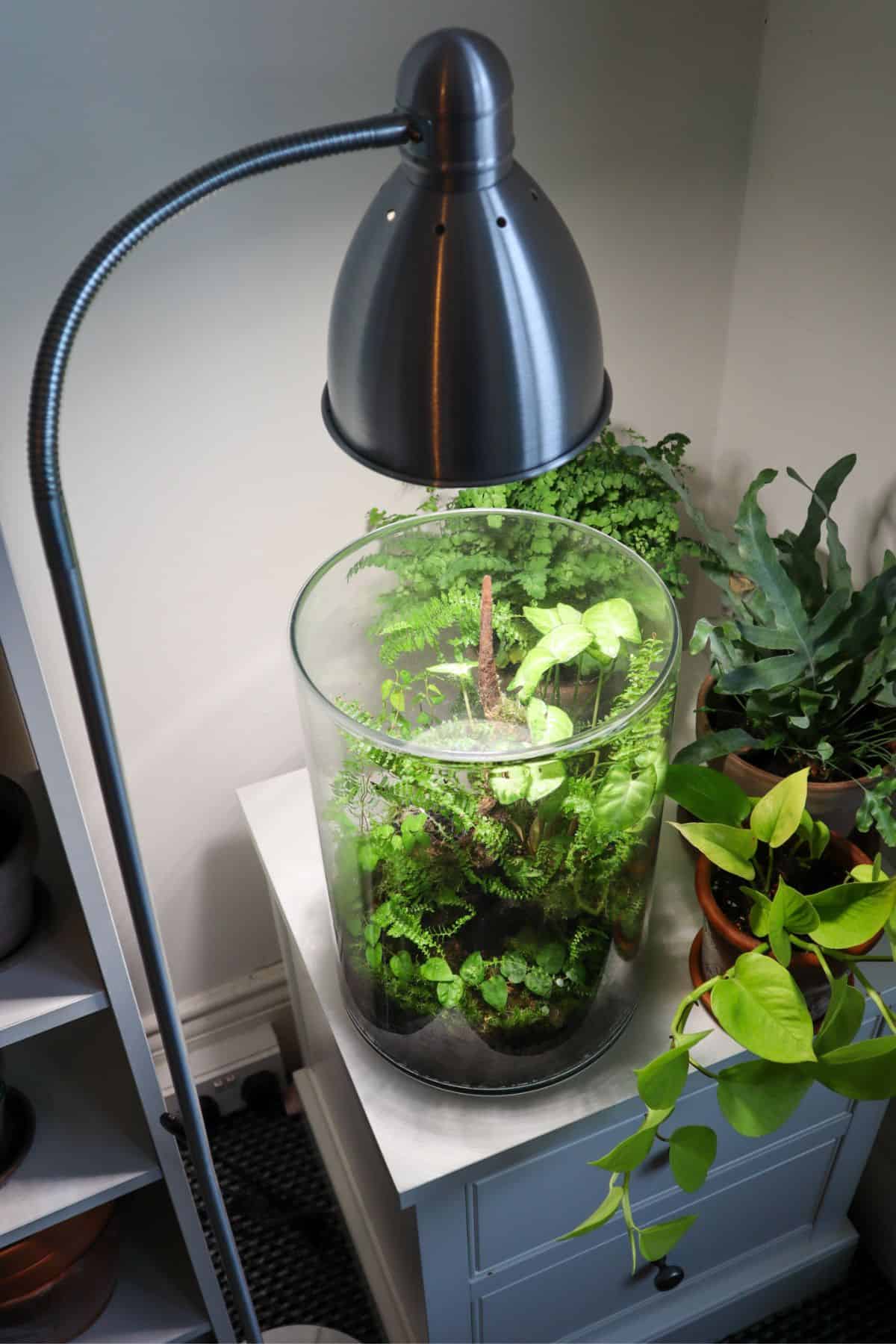
Watering
The Arrowhead Vine appreciates regular, even moisture.
In the wild, the plants of the Syngonium genus can be found naturally growing in riparian areas near streams and waterfalls, so they’re certainly used to it (incidentally, they make an excellent riparium plant).

They are pretty forgiving, and you’ll find you have a fair bit of wiggle room.
- In a pot (with a drainage hole, please), you’re best watering it thoroughly and then allowing it to dry out a little. Any curling of the delicate leaves will tell you when you need to water again.
- In a terrarium, you’ll want to pair with other moisture-loving plants (e.g., ferns) and look to achieve a water balance on the more generous side. Moist but never saturated.

Substrate / Soil
This versatile plant can grow in a variety of substrates and growth mediums.
Good water retention and drainage are fundamental in making sure these water-loving plants have consistent access to moisture but never run the risk of root rot.
I’d recommend a coco-coir base (plus earthworm castings for nutrients) and some supplementary drainage elements like pumice.
👉 Our tropical substrate mix is a great fit here.
Temperature & Humidity
As a native rainforest plant, Syngonium podophyllum ‘Pixie’ thrives in the warmth and humidity of a closed terrarium environment.

Though humidity isn’t a total deal-breaker – Syngonium tends to grow pretty well in most household conditions.
Temperature control, however, is essential as these tropical plants are not frost-hardy in the least.
Maintain at least 60°F (15°C for my fellow Brits) to keep them happy.
Growth
In my experience, young Syngonium plants start as tightly packed units and grow up and outwards as they mature.
They’re hemi-epiphytic growers, so in the wild, they’ll initially root up in the soil and then begin to climb the nearby trees – changing shape as they mature and losing some of their characteristic arrow shapes.
Though, through my experience, I don’t think the Pixie variety tends to change shape all that much.

My Pixie arrived as a pretty small, compact bundle (don’t let the picture fool you; Rae has small hands), but it has grown a fair bit since planting in a closed tropical terrarium.
The leaves have remained about the same size, but the stems have grown a lot to create an overarching focal piece. I love how it twists and turns through the gnarled terrarium wood.
As far as Syngoniums go, it’s still very much a small plant… but it’ll still grow to fill the space in most terrariums.
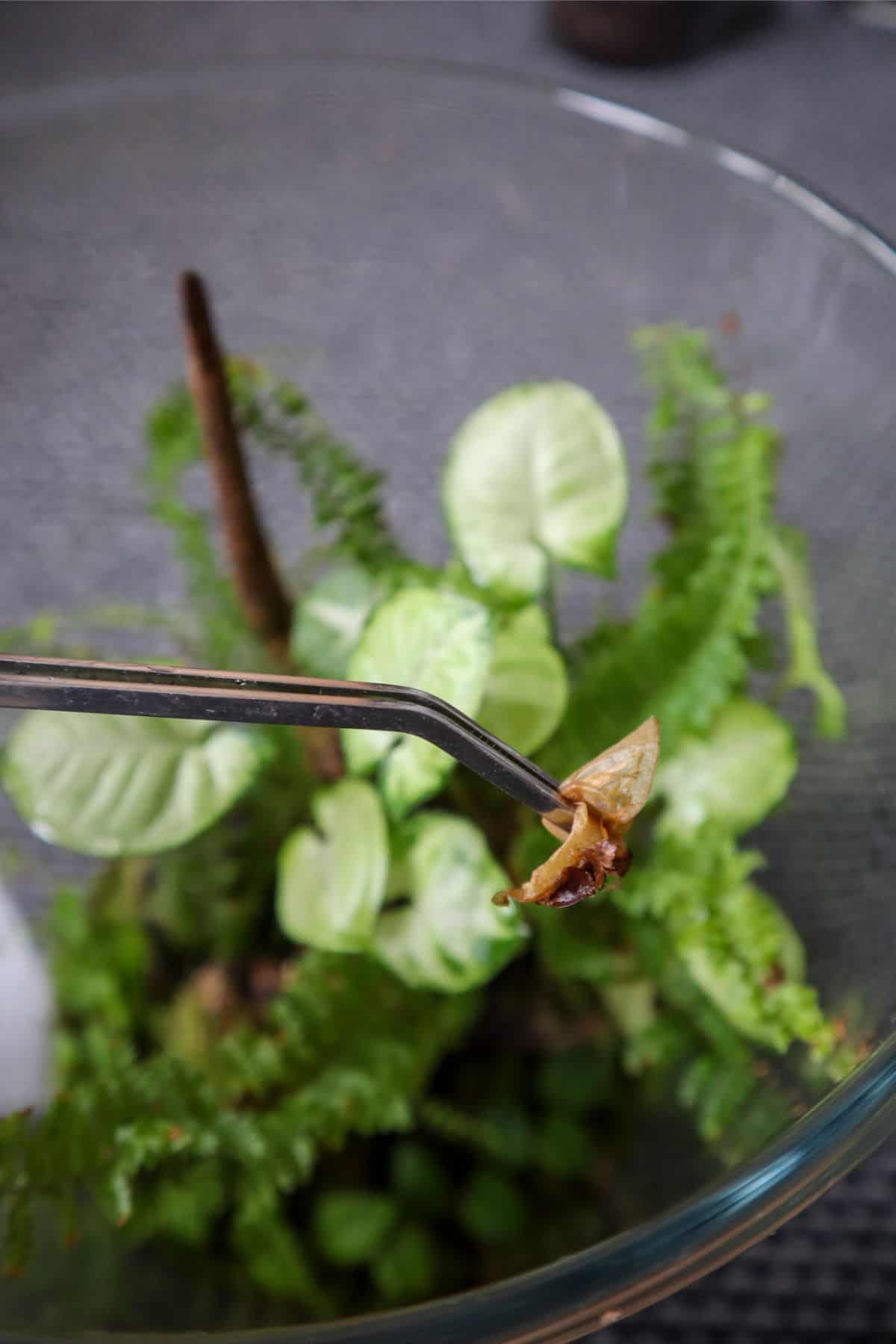
👉 Grab a temperate white springtails culture on our store.
Propagation
Generally, plants in the Syngonium genus are very easy to propagate from stem cuttings.
That being said, it can be hard to see where to ship on these plants as all the nodes are clustered at the base.

The standard advice is to simply take a stem cutting with a couple of leaves and a viable root node and place it in water for a few weeks until it develops its own root system.

Varieties & Similar Plants
The ‘Pixie’ isn’t the only dwarf variety of Syngonium podophyllum.
There’s also a ‘Mini Pixie’, which is a super dwarf variety, and it is genuinely tiny (perfect for a mini terrarium). Growing up to a maximum size of 3 inches, it still has all the characteristics of the arrowhead vine, just in the neatest possible package.
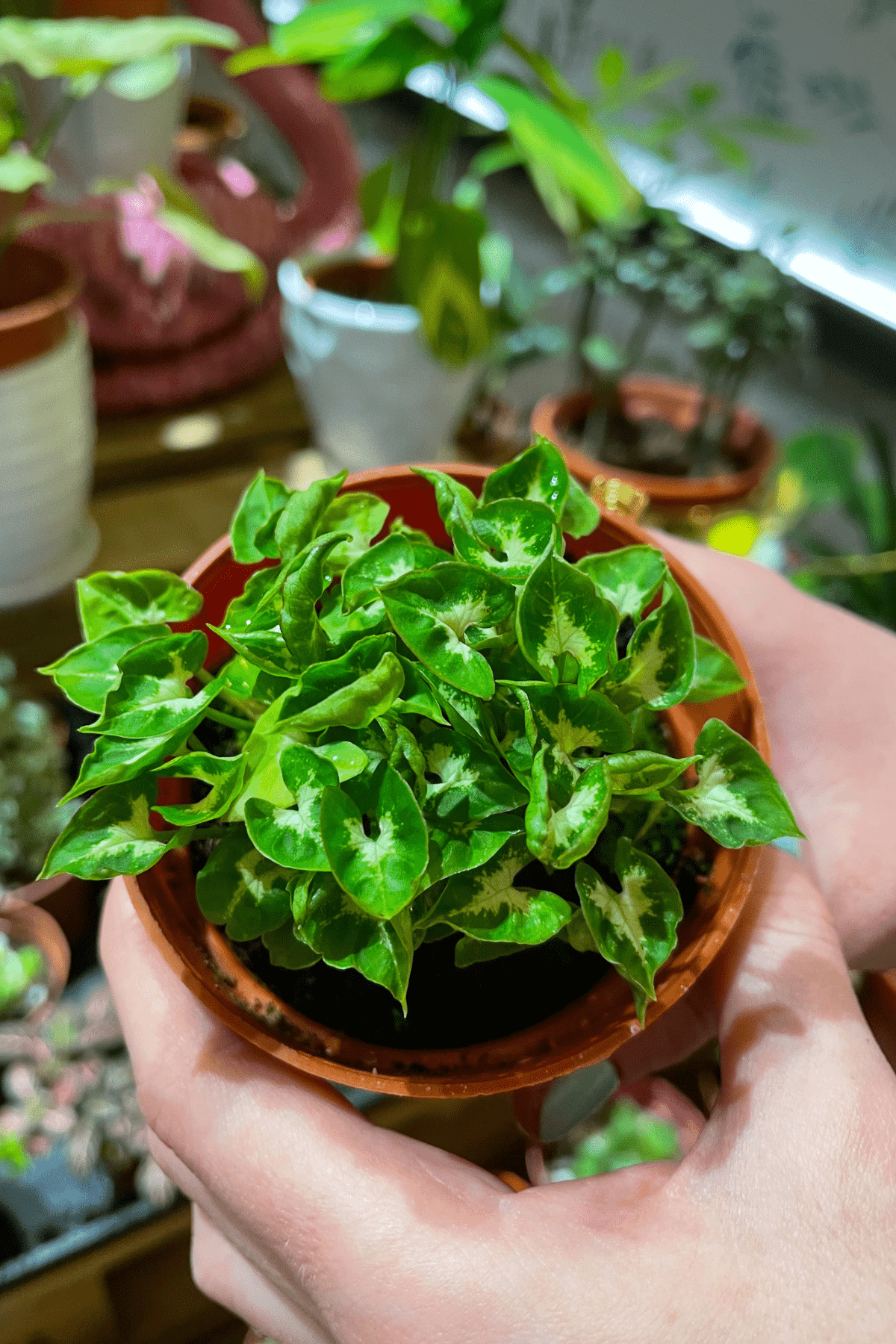
If you’re looking for arrowhead vines on the larger side, check out the stunning Syngonium ‘Neon Robusta’ and Syngonium erythrophyllum ‘Llano Carti Road.’
Frequently Asked Questions
Syngonium Pixie does have an upright growth pattern, but unlike the larger Syngonium podophyllum varieties, it doesn’t appear to produce aerial roots capable of attaching to its environment.
The dwarf Syngonium plants are just as easy to care for as their larger counterparts. You can expect to water them more often (as smaller pots dry out faster), but they’ll need much less maintenance overall.
Syngonium plants like consistent moisture, so watering thoroughly at the roots will be much more effective. Also, humidity isn’t particularly essential for these plants, so the temporary boost from a misting isn’t going to do much.
